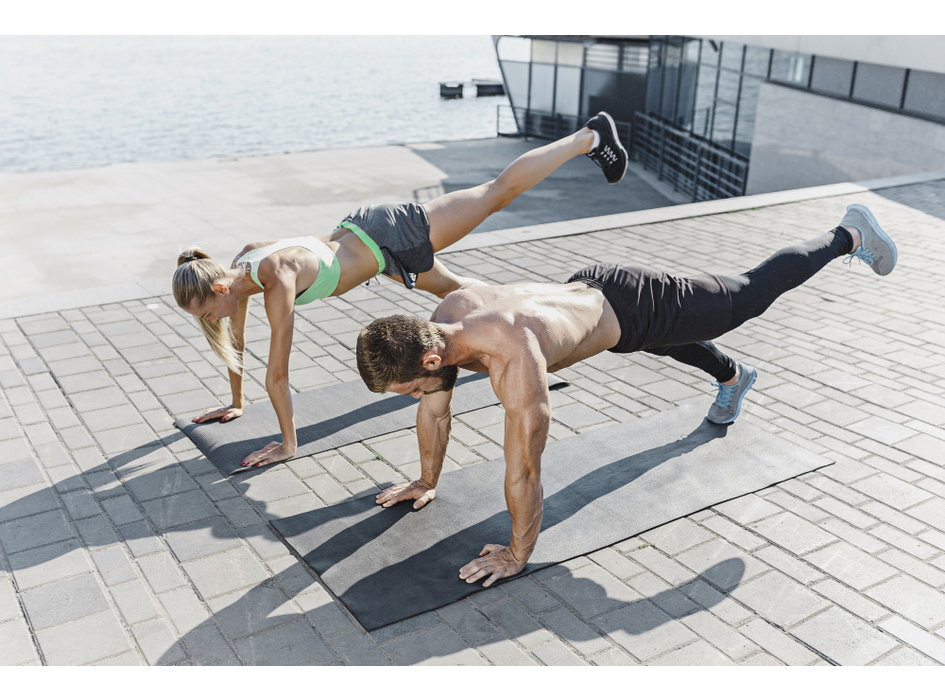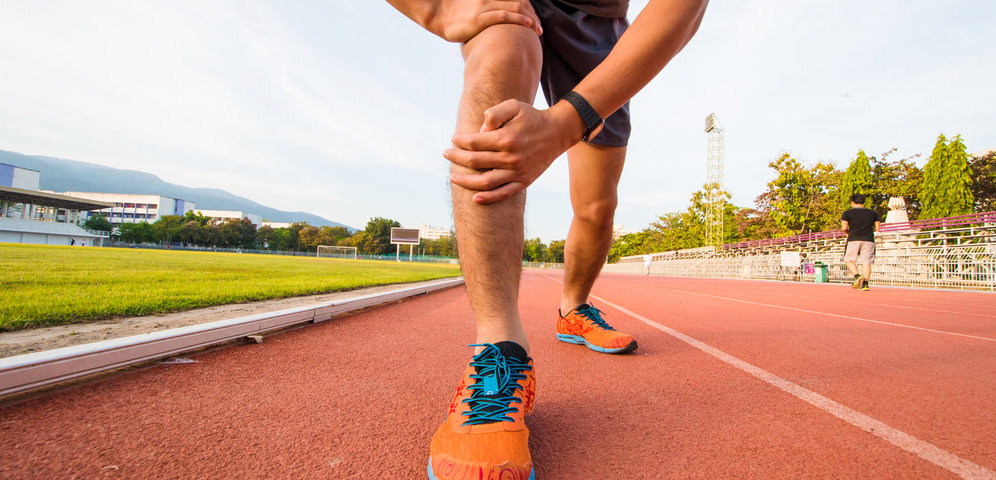Obsah
More than 80% of running injuries are caused by excessive stress and overload, the remaining 20% are sudden injuries like a sprained ankle. Runners most commonly encounter knee and foot injuries. According to the statistical study, the incidence of running injuries is as follows:
| Knees | 7,2 - 50 % |
| Forelegs | 9 - 32,2 % |
| Thigh | 3,4 - 38,1 % |
| Foot | 5,7 - 39,3 % |
| Haunch, pelvis, groin | 3,3 - 11,5 % |
| Ankles | 3,9 - 16,6 % |
| Lower back | 5,3 - 19,1 % |
Let´s take a closer look at the most common injuries of runners:
Runner´s Knee
Running knee is a term that refers to pain in the front of the knee or around the knee. This is a common injury caused by overloading. If you have weak muscles, the risk of knee pain is higher. Typical pain in patellofemoral syndrome is:
- It can be on one or both knees at the same time
- It can be milder but also very strong
- It worsens with prolonged sitting
- It gets worse when jumping, squatting or walking up stairs
- Over time, can start to crack in the knee

Diagnosis of the running knee takes place either on a physiotherapy examination or can be detected by an X-ray. Your physiotherapist will then be able to put together and recommend a plan to help you eliminate knee pain.
Runners with the wrong technique are especially at risk, especially those who step on the inside of the foot. So the best prevention is to learn the right technique, not ignore knee pain, wear compression clothing or knee braces.
Achilles tendinitis
It is an inflammation of the tendon that connects the calf muscle with the heel. Achilles inflammation occurs mainly after overload or high intense running. If the inflammation is not treated, there is a risk of rupture of the Achilles tendon and surgery. Common symptoms of Achilles tendopathy include:
- Dull pain in the lower leg above the heel
- Swelling around near achilles' tendon
- Limited range of motion when bending the foot towards the shin
- Warm feeling over the tendons
Sprinters, who brake hard, are especially prone to Achilles tendinitis. Good prevention is not to be worn or run-out sneakers and quality warm-up before running.
Tibial Stress Syndrome (Shin Splints)
It is an injury that manifests as forearm pain or tibia pain. Up to 20% of runners will experience tibial syndrome. It occurs when the forelegs and tibia are repeatedly loaded, especially when the runner hits a hard and bumpy surface. Risk factors also include bad shoes, incorrect technology and insufficient regeneration. Tibial syndrome pain:
- It comes from the front and sides of the tibiae
- As you run, the pain begins to get worse
- The pain subsides after a good warm-up

If you notice signs of tibial syndrome, pay attention to the raised toe while running. When hitting the ground, keep your foot relaxed and do not engage the front whistle muscle. Also, focus on choosing the right shoes. And last and foremost - give your body regeneration after the run. Do not strain, rest and forget to replenish the necessary nutrients.
Iliotibial Band Syndrome (ITBS)
There is an iliotibial band on the outside of the thigh that helps stabilize the knee when walking and running. If you overload it, there is severe pain on the outside of the knee, which is milder if you warm up well.
- The pain is sharp, usually on the outside of the leg just above the knee
- This place is sensitive to touch
- The pain gets worse if you bend your knee
The best prevention is warming up before and after running training. Don't overestimate your strength and adapt the run to your abilities, also don't forget to regenerate. Strengthen the sciatic muscles and train flexibility in the ankles.
Hamstring injuries
Hamstrings help to slow down the lower leg during the swing phase. When running, athletics or football, they are often tense, then they get tired, weaken and are more prone to injury. What is the pain of hamstrings?
- The pain manifests itself on the back of the thighs
- You may feel an uncomfortable pull
The best prevention is to have strong hamstrings. It is good to strengthen them and gain muscle mass. Warm-ups are also important, runners should try dynamic exercises. Hamstrings are injured, especially during rapid movement, so pay attention to fluency.

Tips for preventing running injuries
Sudden injury can happen to anyone, just a little inattention. But we can prevent injuries that occur gradually.
- Always warm up before running, have a warm-up, stretch. At least 5-10 minutes.
- Run gradually. If you are a beginner, do not overdo it and do not want to run 10 kilometers right away.
- If you feel a sign of pain or a problem, do not ignore it. See a physiotherapist or consult a specialist or doctor.
- Work on your running technique. Try shooting and running in slow motion while running. Then compare them with shots that show the right technique. Alternatively, pay for a few hours of a running coach who will teach you.
- Include stability and flexibility exercises in your training.

